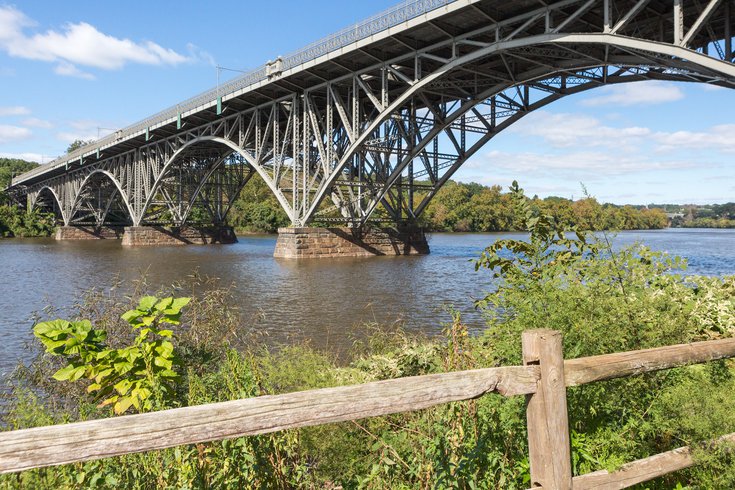
July 21, 2023
 Thom Carroll/For PhillyVoice
Thom Carroll/For PhillyVoice
15 billion gallons of raw sewage flow into Philadelphia's waterways each year, making the city's rivers and streams hazardous for about 128 days of the year, according to a report from PennEnvironment.
Philadelphia's sewer system releases 15 billion gallons of raw sewage and polluted stormwater into the city's rivers and streams annually, making it hazardous to swim or boat in the water for about one third of the year, according to a report published on Thursday.
PennEnvironment, an organization that advocates for clean water and air, analyzed Philly's combined sewer system — stormwater and sewage flow through the same pipes and are sent to one of the city's three water treatment plants — that serves about 60% of the city, using data from the Philadelphia Water Department. The system poses no threat to drinking water, as the water is tested before consumption.
Still, the outdated system can cause sewer overflows, which happen when rainfall overwhelms the system and raw sewage seeps into rivers, creeks and streams without being treated. Overflows occur so frequently that Philly's waterways are unusable for an average of 128 days out of the year due to excessive pollution, the report says.
Cobbs Creek and the Schuylkill River received the most significant amounts of sewage in 2022, with Frankford Creek, the Delaware River, Tacony Creek and Pennypack Creek also experiencing excessive pollution from sewer overflows. The pollution from one sewer overflow can make a watershed unusable for 72 hours following major storm events, particularly in the Delaware and Schuylkill rivers.
Bartram's Garden, the botanical garden along the Schuylkill River in Southwest Philly, cancels about a quarter of its programming due to sewer overflows that create unsafe conditions for visitors, said Valerie Onifade, Bartram's Garden's river program director.
"From the tiniest tributaries of the Schuylkill to the mighty Delaware, people love to walk, hike, boat, fish and sometimes even swim in and around Philly's amazing waterways," said Stephanie Wein, a clean water advocate at the PennEnvironment Research and Policy Center. "While the city has made efforts to address the massive flow of raw sewage, this problem still puts public health at risk on far too many days of the year."
Combined sewer systems are common in older cities, while newer cities keep their sewage and stormwater in separate pipes underground. Portions of Philly have pipes separating sewage and stormwater, but even those can overflow when the sewage line is blocked or stormwater leaks. The Environmental Protection Agency estimates that there are between 23,000-75,000 of these blockages in the United States each year.
Not all of the sewage is coming from Philly residents, the report said. Several suburban communities are able to send about 125 million gallons of wastewater per day into the city's sewage system.
The report suggests that city officials accelerate and expand efforts to stop the discharge of sewage into waterways; suburban communities limit their wastewater flows into Philly's water system; and federal and state officials ensure that Philly has access to resources to keep the Delaware River clean and healthy.
As a result of state and federal regulations requiring the city to reduce its stormwater overflow, the city began its 25-year Green City, Clear Waters initiative in 2011 aimed at reducing the sewer overflow volume by 8 billion gallons per year. Following the report's publication, the Water Department released a statement saying that PennEnvironment's assertions do not consider the city's commitment to Green City.
"It is (also) the position of the City of Philadelphia, including the Health and Police Departments charged with protecting public health and safety, that there are far more barriers to swimming in urban rivers and streams than those posed by sewer overflows following storms," officials from the Water Department said. "Even in a dry start to the summer, there have been two tragic drowning deaths in Philadelphia streams this year."
While the Water Department said the city has made progress, reducing overflows by 3 billion gallons per year so far, replacing the entire combined sewer system would be prohibitively expensive. The utility company has no plans to move the goalposts of its ongoing initiative, noting that the existing plan ensures that the Water Department would not pass improvement costs onto customers.
Sewage overflows commonly contain pathogens and toxic substances that pose health risks to those boating and swimming in the city's rivers and streams. Bacteria, parasites and viruses in sewage can cause lung and intestinal infections, diarrhea, cramps, vomiting, loss of appetite, fever, headaches and worsened allergies.
A Temple University study published last year found significant health risks associated with swimming in Cobbs and Tacony creeks and the Delaware River after rainfall. Those waterways can expose swimmers to illnesses like giardiasis, a parasitic disease, as well as salmonella.